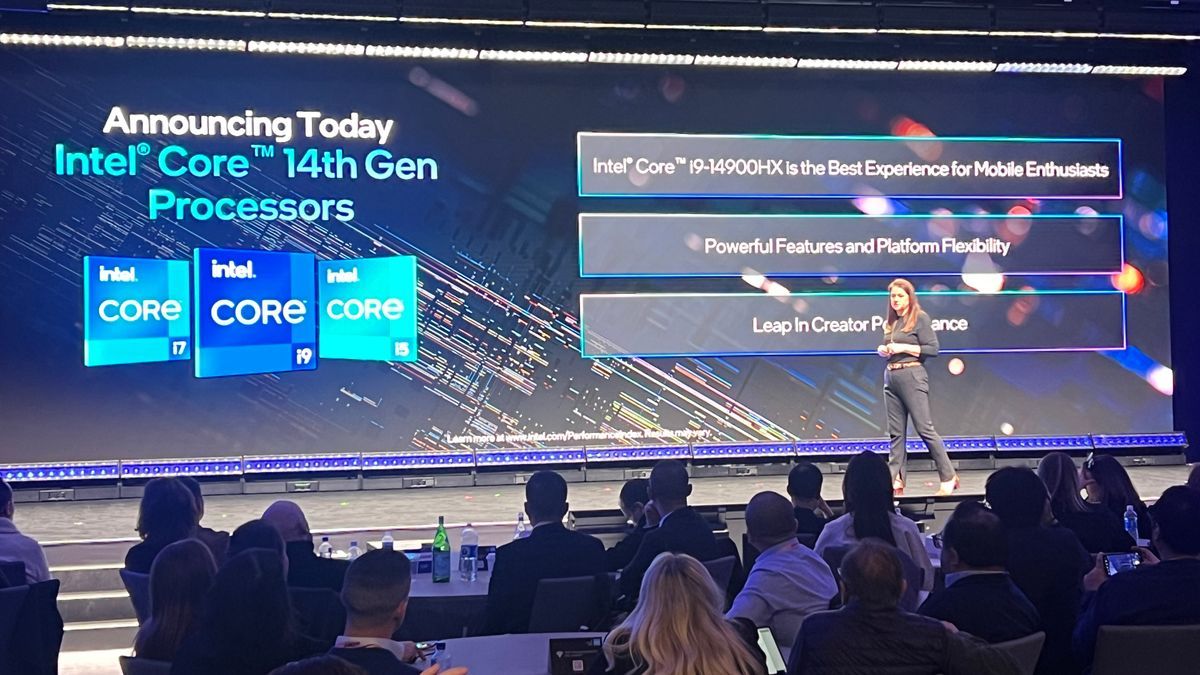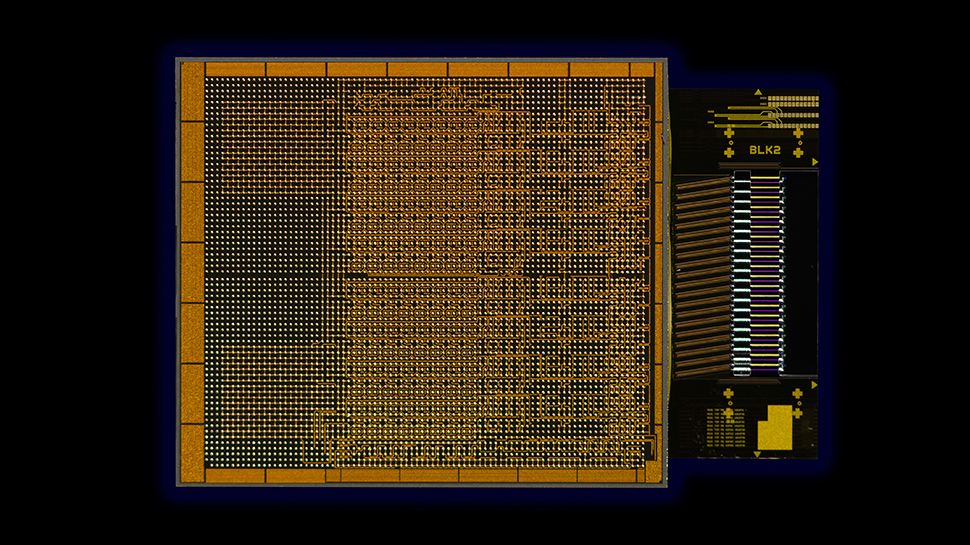Intel announced its latest line of mobile and desktop processors today at CES 2024, and they probably aren’t the chips you expected to follow Intel’s Meteor Lake launch on December 14.
Instead of a new series of next-generation AI chips like the new Core and Core Ultra processors, Intel is launching a final batch of chips from its 14th-generation Raptor Lake Refresh series, including new HX-series processors for New 14th generation 65W and 35W desktop and laptop chips designed to meet a wide range of computing needs.
Finally, Intel is also expanding its portfolio with the Intel Core Series 1 mobile processor family, led by the Intel Core 7 150U processor, targeting the best thin and light portable systems coming to market in 2024.
The 14th Generation Intel processor family is positioned to deliver high-end performance and platform features for both enthusiast users and mainstream PC users, and the HX series processors are designed specifically for mobile users who demand performance. top-notch while traveling.
These are the chips you can expect to see in the best gaming laptop and mobile workstation models launching throughout 2024, and instead incorporate a new neural processor unit for AI applications like the one you’ll find with Intel Meteor Lake, the 14th generation. The HX chips aim to squeeze the latest performance out of Intel’s hybrid core architecture first introduced with Intel Alder Lake in 2021.
One of the stars of the HX series is the Intel Core i9-14900HX, which features eight performance cores (P cores) and 16 efficient cores (E cores), for a total of 32 processing threads, promising not only superior connectivity, but also significant improvements in single- and multi-threaded performance. This is further emphasized by the turbo frequency of up to 5.8 GHz and the 50% increase in electronic cores of the Intel Core i7-14700HX. HX series processors also support up to 192GB of DDR5-5600 memory and come with overclocking capabilities, including support for Intel Extreme Utility (XTU) and Intel Extreme Memory Profile (XMP).
In terms of connectivity, the new processors offer Thunderbolt 5 support with up to 80 Gbps of bi-directional bandwidth and improved wireless features such as integrated Intel Wi-Fi 6E and the new discrete Intel Wi-Fi 7 support for reliable, high-speed connections. .
On the desktop side, the new version includes 18 new processors, which Intel says will deliver up to 5.8 GHz turbo frequency, up to 37% faster multi-threaded performance, and improved Microsoft Office performance compared to the previous generations. These processors also provide backward compatibility with Intel 600 and 700-based motherboards and support up to 192 GB of DDR5-5600/DDR4-3200 MT/S memory.
The 14th Gen Intel Core processors not only aim to enhance gaming and creative workloads, but also serve several vertical markets. They are designed to handle AI and compute-intensive tasks efficiently, enabling innovation in fields such as education, healthcare, and industrial automation, although this should not be confused with the AI capabilities of Meteor Lake processors. Intel, which as of now are not available. They are not expected to be released as socket chips, but will remain all-in-one laptop and desktop processors.
For a plug-in Intel chip with dedicated AI processing via an NPU, enthusiasts will likely have to wait until Intel Arrow Lake drops later in 2024.
In addition to the 14th generation announcement, Intel also announced its new Core U Series 1 processor, including the Intel Core 7 150U processor, which offers up to 5.4 GHz turbo frequency and up to 96 GB of DDR5-5200 memory. DDR4-3200. and solid connectivity options. This series is designed for mobile systems that require a balance between performance and efficiency.
Overall, Intel’s launch at CES 2024 offers ample contenders for our best processors list, although the most interesting chips will likely be the new HX mobile series, which should offer high-end laptops for work and deliver an extra jolt of performance. before Intel pivots completely. it completely moves away from the 14th generation hybrid architecture.
Once again with feeling for the 14th generation Intel processors
Intel is definitely in a transition stage, and its announcement at CES is really a reflection of this crucial point in the company’s processor development. With all the attention on Meteor Lake, Intel’s new 14th Gen chips in both desktop and mobile devices are something of a clearing of the field for Team Blue. For the rest of 2024, all eyes will be on Meteor Lake, Arrow Lake, and possibly even Lunar Lake chips, assuming Intel can deliver on its plans for five generations of processors by 2025 (it’s made clear if Intel’s plans include 2025). seems deliberately vague; the “by” in “by 2025” is doing a lot of heavy lifting there).
As we begin to see Intel leave behind the hybrid core architecture that propelled Team Blue back to the top of the chipmaker list after AMD’s resurgence with its Ryzen processors, the next generations of processors with a multichiplet module design will be both. New to Intel and probably has some bugs to boot.
Intel Meteor Lake is exciting, but it will also likely have some notable growing pains as we move towards 2024 that Arrow Lake and Lunar Lake should hopefully resolve as the new architecture matures through iteration. Until then, however, enthusiasts will have to look to the final Raptor Lake Refresh chips for Intel’s high-performance silicon.
Take a look at our CES 2024 hub for the latest show news as it happens. We will cover everything from 8K From foldable TVs and screens to new phones, laptops, smart home devices and the latest in artificial intelligence, so stay with us for the big stories. And do not forget follow us on tiktok To find out the latest from the CES fair!









